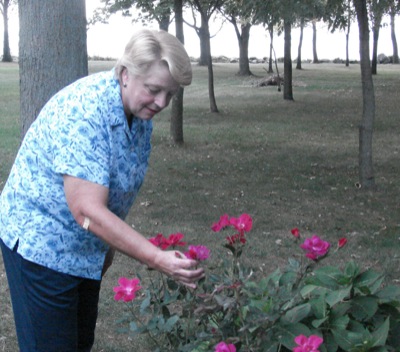Tuesday, October 9th, 2007
Local agriculture official not worried about cattle disease
By Nancy Allen
Local officials are not yet concerned about epizootic hemorrhagic disease (EHD), a common white-tailed deer virus found in Ohio cattle for the first time in August, but agree producers should be aware of it.
"I've had no calls from producers concerned about this or from anyone wanting more information on it," Mercer County OSU Extension agent Todd Mangen said. "It's still pretty far away."
Ohio Department of Agriculture (ODA) officials on Aug. 30 confirmed EHD in two Pike County cattle herds. It was subsequently found in five other Ohio counties - Highland, Monroe, Washington, Noble and Muskingum, said Cindy Brown, spokeswoman for the Ohio Department of Agriculture. All the infected cattle were kept on open pasture. It also has been found in several neighboring states.
Symptoms in cattle include lameness, salivation, cloudy nasal discharge, swelling of coronary band (growth area of the hoof), mouth lesions, conjunctivitis and a decrease in milk production.
The virus occurs annually in deer herds across North America but is less common in cattle. In the Pike County cattle, officials identified a wild strain of the virus, which will run its course much like the common flu. In deer, EHD is typically fatal.
Officials stress the disease poses no threat to human health or to the safety of meat consumption. The virus cannot be spread from animal to animal or from animal to humans. Both cattle and deer contract EHD only from the bite of infected gnats or flies.
Insects contract the virus from infected deer or cattle and pass it on to surrounding populations. This summer's drought has forced animals and insects to common watering spots, increasing the spread of EHD.
The good news for Mercer County producers is that cattle raised in confined buildings, as most are in Mercer County, are less likely to get the disease. Another bonus, typically, the onset of cold weather suppresses the disease as frosts drives insects into winter inactivity.
"There are little if any cattle on any open pasture in Mercer County," Mercer County Farm Service Agency Executive Director Chris Gibbs said. "The only reason they would be on pasture would be a loafing area that dairy farmers use to rest the cattle in between milkings."
Gibbs also said that the county's cattle are given water through controlled, automatic systems that would not be commonly used by wildlife.
Producers are encouraged to report any suspected cases of EHD, said Bill Shulaw, an OSU Extension veterinarian.
For more information on the diseases, log on to the OSU Extension Beef Team Web site at http://fairfield.osu.edu/ag/beef/beefSepmbr7.html, or http://fairfield.osu.edu/ag/beef/beefSept19.html. Photos of cattle with the disease can be found at http://www.vet.ohio-state.edu/1985.htm.


